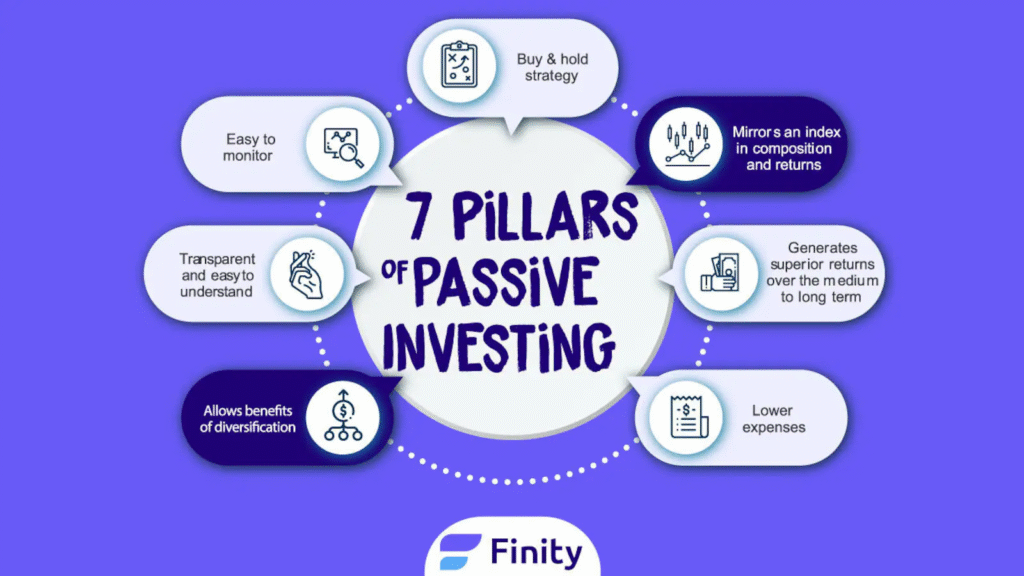Top Real Estate Investment Opportunities for 2025
The real estate market has always been a dynamic and lucrative avenue for investment, but like any other sector, it is continuously evolving. With each passing year, new opportunities arise, shaped by global economic shifts, demographic changes, technological advancements, and changing preferences in how people live and work.
As we approach 2025, it is crucial for investors to stay informed about the emerging trends and opportunities in the real estate sector. Whether you’re a seasoned investor or a first-timer, understanding the best opportunities will help you make strategic decisions that offer long-term financial success.
In this article, we’ll explore some of the top real estate investment opportunities for 2025, considering factors like location, market trends, technological innovations, and societal changes that are likely to influence the market.
Key Takeaways
- Diversification is key to successful real estate investing. Explore various types of properties and markets to spread risk.
- Sustainability is becoming a major focus in the real estate sector. Green buildings and energy-efficient properties are set to offer high returns.
- Urban revitalization and emerging markets present exciting opportunities for investors willing to take on some risk for long-term growth.
- Stay updated on local regulations and market shifts, as these can significantly impact the profitability of your investments.
1. Urban Development and Revitalization Projects

Urban redevelopment continues to be one of the most promising areas for real estate investment in 2025. As cities around the world focus on revitalizing older neighborhoods, particularly those that were once industrial or overlooked, these areas present huge opportunities for investors.
Why Urban Revitalization?
- Infrastructure Improvements: Cities are investing heavily in infrastructure improvements such as transportation, public spaces, and community amenities. This makes previously neglected areas more attractive to both residents and businesses.
- Affordable Housing: In many urban centers, there’s a growing demand for affordable housing options. Investors who can capitalize on this trend by purchasing properties in up-and-coming areas can benefit from significant appreciation over time.
- Sustainability Focus: Green building certifications and sustainable development are becoming more important in urban revitalization efforts. With growing concerns about climate change, many investors are looking for opportunities that combine profitability with sustainability.
Top Cities for Urban Revitalization in 2025:
- Detroit, Michigan
- Cleveland, Ohio
- Pittsburgh, Pennsylvania
- St. Louis, Missouri
2. Real Estate Investment Trusts (REITs)
Real Estate Investment Trusts (REITs) have been gaining popularity among investors due to their ability to provide exposure to real estate without requiring the large capital typically needed for direct property ownership. With the rise of both commercial and residential REITs, these investment vehicles offer diverse opportunities for those looking to enter the real estate market with less risk and more liquidity.
Why REITs Are a Top Opportunity in 2025:
- Diversification: REITs allow investors to spread their risk across a broad portfolio of real estate properties.
- Stable Income Stream: REITs typically pay out a high percentage of their income in the form of dividends, providing a steady cash flow.
- Access to Global Markets: Many REITs invest in international properties, offering exposure to global real estate markets without the need for international travel or management.
Popular REIT Sectors to Watch:
- Healthcare REITs: With an aging population, healthcare facilities, including hospitals, senior housing, and medical offices, are expected to continue to see growth.
- Industrial REITs: As e-commerce continues to grow, warehouses and distribution centers are in high demand.
- Residential REITs: Particularly those focused on affordable housing or rental properties in prime locations.
3. Short-Term Rental Properties
With the continued rise of platforms like Airbnb, short-term rental properties remain a strong opportunity for real estate investors. These properties can generate substantial income, especially in popular tourist destinations or major metropolitan areas with a high demand for temporary lodging.
Why Short-Term Rentals are Hot in 2025:
- Increased Travel Demand: As the global economy stabilizes, the travel industry is expected to continue growing, creating a greater demand for short-term rental properties.
- Flexibility: Short-term rentals offer flexibility in terms of pricing, rental duration, and the ability to market the property on multiple platforms.
- Higher ROI: Compared to traditional long-term rentals, short-term rentals tend to generate higher income, especially in high-demand locations.
Top Locations for Short-Term Rental Investment:
- Miami, Florida
- Austin, Texas
- Los Angeles, California
- New York City, New York
Things to Consider:
- Local Regulations: Many cities are implementing stricter regulations around short-term rentals, so it’s important to stay up-to-date on local laws and zoning ordinances.
- Maintenance Costs: Short-term rentals often require more frequent cleaning and maintenance, which can add to the cost of ownership.
4. Single-Family Rental Properties (SFRs)
Investing in single-family rental properties has always been a reliable strategy for long-term wealth building. With low mortgage rates in the coming years and a growing demand for single-family homes, this investment type is expected to continue to perform well through 2025 and beyond.
Why Single-Family Rentals Are Ideal in 2025:
- Steady Demand: As homeownership becomes increasingly out of reach for many millennials and Generation Z, the demand for single-family rentals is expected to remain high.
- Equity Growth: With a relatively stable market, investors who hold on to SFR properties for several years can expect to see steady appreciation in property value.
- Inflation Hedge: Rental properties act as an excellent hedge against inflation, as rental income tends to rise with inflation, providing a consistent cash flow.
Top Areas for SFR Investment:
- Charlotte, North Carolina
- Phoenix, Arizona
- Boise, Idaho
- Nashville, Tennessee
5. Sustainable and Green Real Estate Investments
Sustainability is no longer just a buzzword; it is a key factor in shaping the future of real estate. As consumers become more environmentally conscious, the demand for sustainable homes and green buildings is on the rise. Investing in eco-friendly properties, whether residential or commercial, can offer substantial long-term returns.
Why Sustainable Real Estate is Trending in 2025:
- Government Incentives: Many governments around the world are offering tax incentives and rebates for the development and purchase of energy-efficient properties.
- Tenant Demand: Both residential and commercial tenants are increasingly prioritizing sustainability in their decision-making process.
- Lower Operating Costs: Green buildings often have lower utility costs, which translates to higher profits for landlords and property owners.
Examples of Sustainable Investment Opportunities:
- Solar-Powered Homes
- Energy-Efficient Commercial Buildings
- LEED-Certified Developments
6. Mixed-Use Developments
Mixed-use developments combine residential, commercial, and sometimes even industrial spaces into one cohesive project. These developments are especially appealing in urban centers where space is limited and demand for live-work-play environments is growing.
Why Mixed-Use Developments Are Growing:
- Urbanization Trends: As more people move to cities, mixed-use developments offer a convenient lifestyle where residents can live, work, and shop in close proximity.
- Higher Demand for Convenience: Consumers are increasingly looking for convenience and accessibility, making mixed-use spaces highly desirable.
- Diversified Revenue Streams: By combining different property types, investors can benefit from multiple income streams, reducing risk.
Notable Mixed-Use Markets:
- New York City, New York
- San Francisco, California
- Toronto, Canada
- London, UK
7. International Real Estate Investments
The global real estate market offers plenty of opportunities for diversification, especially as economies around the world continue to recover from the pandemic. Markets in Asia, Europe, and Latin America are showing signs of strong growth, making them attractive to investors looking to expand internationally.
Why International Real Estate Is Attractive in 2025:
- Currency Diversification: International investments help diversify risk by allowing exposure to foreign currencies and economies.
- Emerging Markets: Many countries in Asia, Africa, and South America are experiencing rapid economic growth, making them attractive real estate investment destinations.
- Property Price Appreciation: In emerging markets, real estate prices are often more affordable, providing greater potential for appreciation.
Top International Markets for Real Estate Investment:
- Mexico
- India
- Vietnam
- Portugal
8. Aging Real Estate Assets and Renovation Opportunities
One significant investment opportunity in 2025 is the renovation of older real estate assets. As more buildings age, the need for modernizing outdated properties to meet current market demands increases. Investors who specialize in purchasing, renovating, and upgrading older properties can see significant returns by catering to modern buyers and renters who are increasingly interested in contemporary amenities.
Why Renovating Aging Real Estate Is Profitable in 2025:
- Increased Demand for Modern Spaces: Older buildings may have lower acquisition costs but can be renovated to meet the growing demand for more sustainable, tech-friendly, and stylish properties.
- Urban Growth: As cities expand, older properties located in prime areas (such as downtown regions) are often ripe for renovation, offering the potential for rapid appreciation.
- Potential for Large Returns: While renovation projects require substantial investment, if done right, they can lead to an enormous return on investment (ROI), especially in areas where real estate prices are rising quickly.
Top Renovation Opportunities:
- Historic Districts: Old buildings in city centers or historic districts are often in high demand after being restored with modern interiors.
- Multi-family Units: Investing in and converting older multi-family properties into contemporary living spaces can cater to a growing number of renters.
- Warehouse Conversions: Former industrial or warehouse buildings, especially in urban areas, are becoming popular for conversion into lofts and creative workspaces.
9. Luxury Real Estate

Although the luxury real estate market can be competitive and costly, it continues to provide profitable opportunities for investors with the capital to take on high-end properties. The increasing wealth of high-net-worth individuals (HNWIs), along with the boom in the remote work culture, has spurred interest in luxury real estate in regions that provide privacy, space, and unique amenities.
Why Luxury Real Estate Will Continue to Thrive:
- Post-Pandemic Wealth Trends: The wealthy are seeking larger, more private living spaces as they continue to embrace remote work. Luxury real estate markets in coastal regions or suburban areas are experiencing high demand.
- High Profit Margins: While the entry price is high, luxury properties offer substantial rental returns or resale values due to their exclusivity and scarcity.
- Investment in Amenities: Luxury properties often include amenities that attract affluent buyers and renters, such as private gyms, pools, smart home systems, and proximity to cultural or business hubs.
Prime Luxury Markets:
- Miami, Florida: Known for its opulent beachfront properties and growing international demand, particularly from wealthy foreign buyers.
- Los Angeles, California: High-end properties in areas like Beverly Hills and Malibu continue to attract high-net-worth buyers.
- London, UK: London’s luxury property market is one of the most robust in the world, with demand from both domestic and international investors.
- Dubai, UAE: The luxury real estate market in Dubai has seen significant growth, especially in new developments catering to international investors.
10. PropTech and Technology-Driven Real Estate Investments

The rise of Property Technology (PropTech) in recent years has introduced a variety of ways for investors to engage with the real estate market through innovative tools, software, and automation. This includes everything from virtual property tours to blockchain technology for property transactions. In 2025, technology will continue to shape the real estate landscape, presenting new opportunities for both seasoned and novice investors.
Why PropTech Is Changing Real Estate Investing:
- Efficiency and Transparency: Technology streamlines the process of buying, selling, and managing properties, making the investment process more efficient and transparent.
- Data-Driven Decisions: Real estate investors can use predictive analytics, big data, and AI-powered tools to make more informed investment decisions.
- Blockchain for Real Estate: Blockchain technology is revolutionizing how real estate transactions are conducted, making them faster, safer, and more transparent.
PropTech Opportunities to Watch:
- Real Estate Platforms: Digital platforms that allow fractional real estate investing or provide access to property investments with lower capital requirements.
- Smart Buildings: Investing in properties equipped with the latest smart technologies, such as IoT devices and AI for better energy management and security.
- Blockchain Property Transactions: Investors can leverage blockchain technology to purchase or sell properties, which promises faster processing times and reduced transaction fees.
11. Affordable Housing Investments
As the housing market becomes increasingly expensive in many parts of the world, the demand for affordable housing continues to rise. Investing in affordable housing can be a strong long-term strategy, especially in markets where there is significant housing scarcity, and governments are offering incentives for such investments.
Why Affordable Housing Is an Important Opportunity in 2025:
- Increasing Demand: Affordable housing is becoming scarce in many urban centers, leading to rising demand from lower and middle-income families.
- Government Incentives: Many governments are introducing tax credits, low-interest loans, and grants to encourage investment in affordable housing.
- Steady Cash Flow: Properties in this segment often see high occupancy rates, leading to a consistent and reliable rental income stream.
Locations to Invest in Affordable Housing:
- Midwest United States: Cities like Cleveland, Detroit, and St. Louis offer affordable housing opportunities, with government incentives for new development.
- Eastern Europe: Countries such as Poland, Hungary, and Romania have emerging affordable housing markets that are drawing international investors.
- South America: Countries like Colombia and Brazil have affordable housing demands that are only increasing as the middle class grows.
12. Suburban Real Estate Boom
In the wake of the pandemic, many urban residents are moving to suburban areas in search of more space and lower costs of living. Suburban real estate is one of the strongest investment opportunities as both families and young professionals embrace the appeal of suburban life, especially with the continued normalization of remote work.
Why Suburban Real Estate Is Surging:
- Remote Work Culture: Remote work has encouraged people to leave crowded cities for larger, more affordable homes in the suburbs.
- Family-Friendly Communities: Suburbs offer more space for families and are often closer to quality schools, making them an attractive option for parents.
- Lower Living Costs: With real estate prices rising in cities, suburban areas offer relatively lower property costs with greater space and more desirable amenities.
Prime Suburban Areas to Invest In:
- Dallas-Fort Worth, Texas: The metroplex continues to grow, with more people relocating from major urban centers like Los Angeles and New York.
- Phoenix, Arizona: Phoenix has become a key market for suburban development, offering affordable housing options and rapid growth.
- Raleigh-Durham, North Carolina: Known for its technology-driven economy, Raleigh-Durham is seeing an influx of new residents moving to its suburban areas.
- Atlanta, Georgia: The suburban areas around Atlanta are booming, with more people seeking out space, lower costs, and proximity to the city.
Also Read :-What Are The Top Investment Platforms For 2025?
Conclusion
The real estate landscape in 2025 offers a wealth of opportunities for savvy investors. Whether you’re looking for long-term wealth through rental properties, seeking short-term income through short-term rentals, or diversifying your portfolio with REITs and sustainable investments, the market is ripe with potential. Staying informed about market trends, regulations, and emerging sectors will help you make the right investment choices.
FAQs About Real Estate Investment in 2025
1. What are the top real estate investment opportunities for 2025?
- Urban revitalization, REITs, short-term rentals, single-family rentals, sustainable investments, mixed-use developments, and international real estate.
2. How do I start investing in real estate?
- Research the market, determine your budget, and decide whether you want to invest in physical properties or REITs. Consider seeking advice from a real estate professional.
3. Are REITs a good investment in 2025?
- Yes, REITs are a great option for diversification and steady income, especially in sectors like healthcare and industrial properties.
4. Is real estate a good hedge against inflation?
- Yes, rental properties tend to perform well during inflationary periods, as rents usually increase with inflation.
5. How do I find profitable short-term rental properties?
- Look for high-demand tourist destinations or areas with limited hotel supply. Make sure to check local regulations and operating costs.
6. Should I invest in green real estate?
- Absolutely. Sustainable properties not only meet growing consumer demand but also offer long-term financial benefits such as reduced operating costs.
7. How do I diversify my real estate portfolio?
- By investing in different property types (residential, commercial, REITs), geographic areas, and even international markets.



